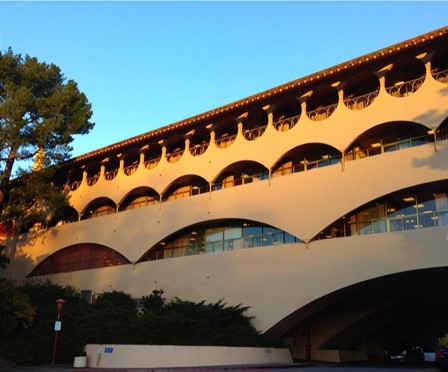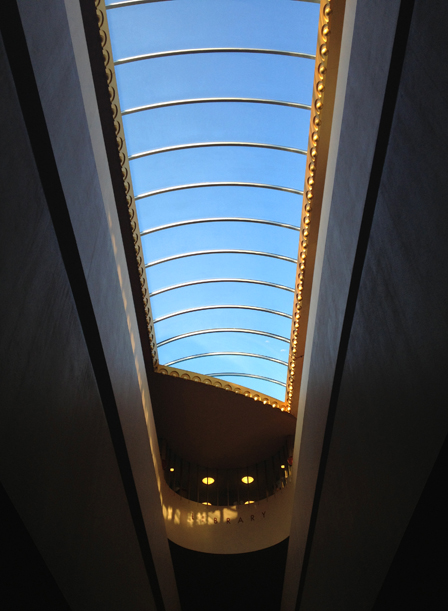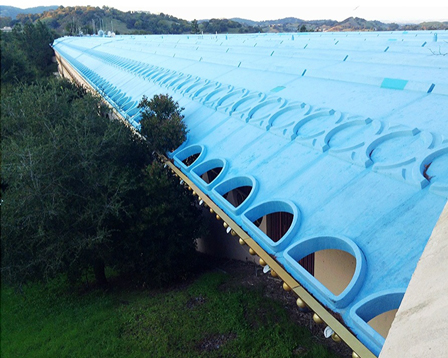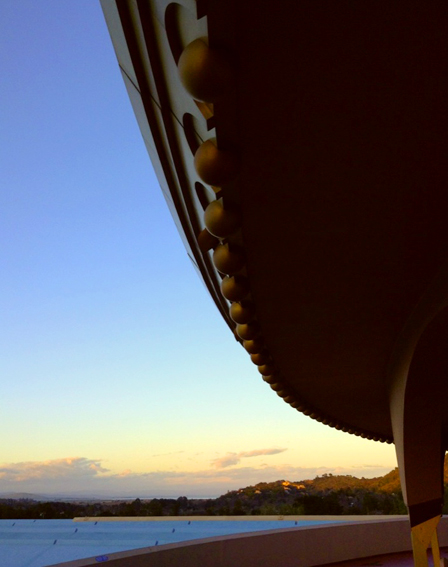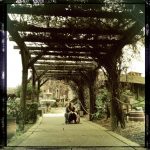In 1998, Andrew Niccols’ film Gattaca (from the year prior) screened in my college-required biology class, and my life was never the same.
That’s only a slight a exaggeration. Science fiction inspires me because its stories are based on things that scientists are actually exploring in the present, making it totally conceivable that the suspension of disbelief is a logical endeavor.
Space exploration in particular has always gotten my creative juices flowing — to be able to step out past the stars, into the unknown, to be able to look back with wonder at how small a space I came from, and to know that I am part of something infinitely more vast… these are the concepts that science fiction sparks for me.
Gattaca‘s lyrical dialogue contains many quotes that have stuck with me, in terms of putting life in perspective. When Vincent says, “A year is a long time,” Irene replies, “Not so long. Just once around the sun.”
So, for me, the location where they filmed Gattaca was a magical place, filled with romance and intrigue. When I found myself in Northern California, I had to visit the Marin County Civic Center.
Last spring, I visited Frank Lloyd Wright’s Fallingwater and Kentuck Knob in Pennsylvania. It was interesting to compare and contrast some of the style, design, and feel of the Marin County Civic Center with those homes, as well as with what I know of the lines he delineated in another public space, at the Guggenheim Museum in New York. His style consistently seems to “contain,” clearly spelling out his own intentions for use, and with a strong hand not unlike that of an auteur filmmaker.
Architecture and movies are easy bed-fellows, as they are both visual arts that must be experienced through time; neither is fully felt in just one instant, which would make them the same as still photography. In film, time transpires through the rapid succession of imagery. In architecture, one must take the time to physically move through the space.
The real-life three-dimensional “Gattaca,” was a lot different from the elegant, posh space center presented in the film. In person, it had a distinct 1970s “office” vibe — in fact, the whole place is full of offices and a library. (What an amazingly historic place to rent a workspace!)
If you could translate the smell of old brass, of metal enclosed behind doors for decades, into a visual depiction — that was the vibe I got from this once cutting-edge space. It weighed on me in the way that many 1970s ranch-style homes do. Something underneath the surface seemed to sag under the weight of itself. The design was intact and radiant even through the years of wear, but it seemed to just be hanging on.
It was glorious to see, and yet, it had aged, like a Polaroid photo. Not having been created to be archival, the stamp of the time its technology was created became as much a part of its legacy as the image contained therein.
Did it live up to my expectations? Yes, I suppose it did. In fact, seeing the space in person made me fall in love with the film all over again, having a fresh perspective on what it had achieved in creating a cinematic space different from the architecture itself.
I visited Marin County to create a forthcoming installment of my series, Kids in Space, and I had the most adorable child subject to explore with. Stay tuned here for that and several other Kids in Space adventures, including locations in Houston, Chicago, and Seattle.

